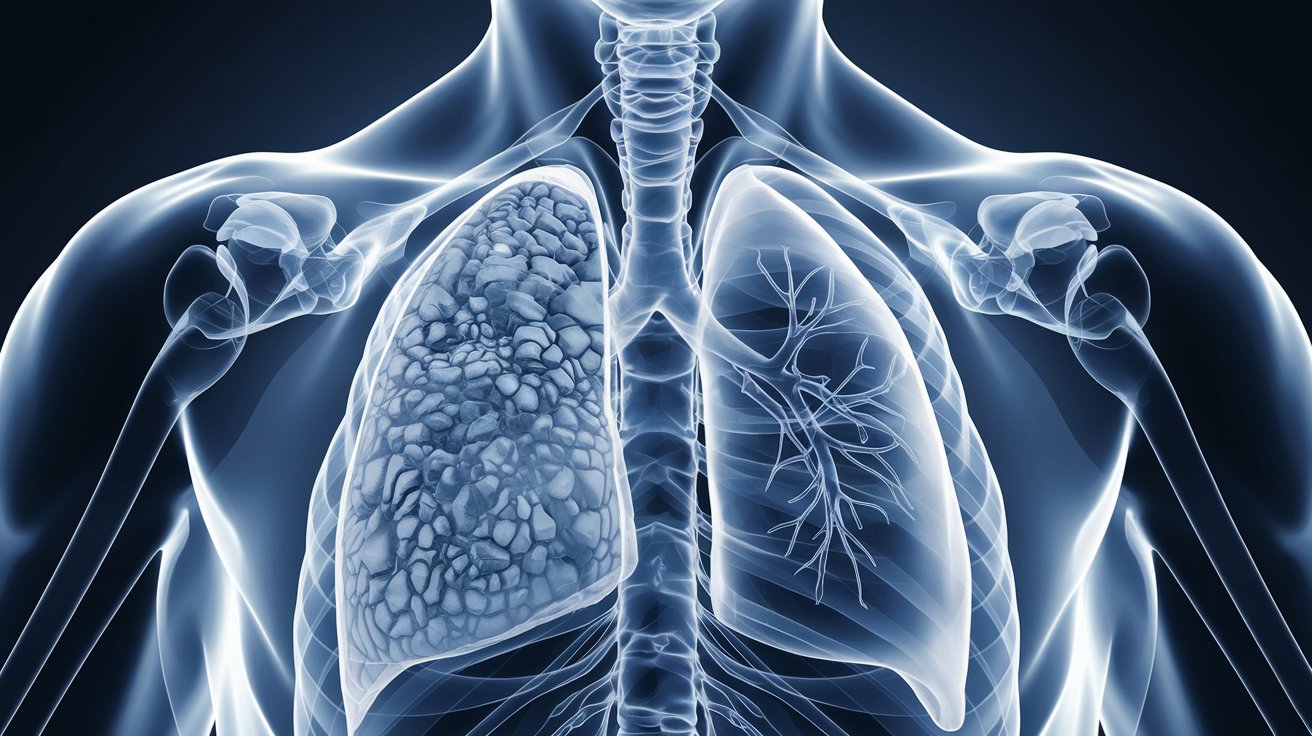
Right Middle Lobe Syndrome might sound like a complex medical term, but it’s simpler than you think. This condition affects the right middle lobe of the lung, causing recurrent infections and blockages. Symptoms often include a persistent cough, shortness of breath, and sometimes chest pain. Causes can range from infections to anatomical abnormalities. Diagnosis usually involves imaging tests like X-rays or CT scans. Treatment varies from antibiotics to surgery, depending on severity. Understanding this syndrome is crucial for managing respiratory health. Let’s dive into 40 intriguing facts about Right Middle Lobe Syndrome to help you grasp its nuances better.
Key Takeaways:
- Right Middle Lobe Syndrome (RMLS) is a rare lung condition that can cause chronic infections and breathing difficulties. It primarily affects the middle lobe of the right lung and can be triggered by infections, obstructions, and immune system deficiencies.
- Managing RMLS involves lifestyle changes, ongoing medical care, and support from healthcare teams and resources. Regular check-ups, pulmonary rehabilitation, and avoiding smoking are crucial for living with the condition. Ongoing research is also exploring new treatments and advancements.
What is Right Middle Lobe Syndrome?
Right Middle Lobe Syndrome (RMLS) is a rare lung condition that affects the middle lobe of the right lung. It can cause chronic infections, inflammation, and other respiratory issues. Understanding this condition can help in managing it better.
-
RMLS primarily affects the middle lobe of the right lung. This lobe is more prone to infections due to its anatomical position and narrow bronchus.
-
It was first described in 1948. Dr. Graham and Dr. Burford identified the syndrome while studying lung diseases.
-
RMLS can be caused by various factors. These include infections, bronchiectasis, and obstructions like tumors or foreign bodies.
-
Symptoms often mimic other respiratory conditions. Common signs include chronic cough, fever, and recurrent respiratory infections.
-
Diagnosis usually involves imaging tests. Chest X-rays and CT scans are commonly used to identify the condition.
Causes and Risk Factors
Understanding the causes and risk factors of RMLS can help in early detection and prevention. Here are some key points to consider:
-
Infections are a leading cause. Bacterial, viral, and fungal infections can all contribute to the development of RMLS.
-
Bronchiectasis is a common underlying condition. This chronic condition leads to the widening of the bronchi, making them more susceptible to infections.
-
Obstructions can trigger RMLS. Tumors, mucus plugs, or foreign bodies can block the airways, leading to the syndrome.
-
Immune system deficiencies increase risk. Individuals with weakened immune systems are more prone to developing RMLS.
-
Smoking is a significant risk factor. Smokers have a higher likelihood of developing respiratory conditions, including RMLS.
Symptoms and Complications
Recognizing the symptoms of RMLS is crucial for timely treatment. Here are some common symptoms and potential complications:
-
Chronic cough is a hallmark symptom. This persistent cough often brings up mucus and can be quite debilitating.
-
Recurrent respiratory infections are common. Patients often experience frequent bouts of pneumonia or bronchitis.
-
Shortness of breath can occur. Difficulty breathing is a common complaint among those with RMLS.
-
Chest pain may be present. Some patients report a dull or sharp pain in the chest area.
-
Fatigue is a frequent issue. Chronic infections and breathing difficulties can lead to significant tiredness.
Diagnosis and Treatment
Accurate diagnosis and effective treatment are essential for managing RMLS. Here’s what you need to know:
-
Chest X-rays are often the first step. These images can reveal abnormalities in the middle lobe.
-
CT scans provide more detailed images. They help in identifying the extent of the condition and any underlying causes.
-
Bronchoscopy can be used for diagnosis. This procedure allows doctors to look inside the airways and take samples if needed.
-
Antibiotics are commonly prescribed. These medications help treat bacterial infections associated with RMLS.
-
Bronchodilators can ease symptoms. These drugs help open up the airways, making breathing easier.
Surgical Options
In severe cases, surgery might be necessary to manage RMLS. Here are some surgical options:
-
Lobectomy is a common procedure. This surgery involves removing the affected middle lobe to prevent further complications.
-
Segmentectomy is less invasive. Only a portion of the middle lobe is removed, preserving more lung tissue.
-
Bronchial stenting can be used. This procedure involves placing a stent to keep the airway open.
-
Balloon bronchoplasty is another option. A balloon is used to widen the narrowed bronchus, improving airflow.
-
Post-surgical care is crucial. Patients need to follow a strict regimen to ensure proper healing and prevent infections.
Living with Right Middle Lobe Syndrome
Managing RMLS involves lifestyle changes and ongoing medical care. Here are some tips for living with the condition:
-
Regular check-ups are essential. Frequent visits to the doctor help monitor the condition and catch any complications early.
-
Pulmonary rehabilitation can be beneficial. This program includes exercises and education to improve lung function.
-
Avoiding smoking is crucial. Quitting smoking can significantly improve lung health and reduce symptoms.
-
Staying hydrated helps. Drinking plenty of fluids can thin mucus, making it easier to cough up.
-
Healthy diet supports overall health. Eating a balanced diet can boost the immune system and improve energy levels.
Research and Future Directions
Ongoing research is vital for better understanding and treating RMLS. Here are some recent advancements and future directions:
-
New antibiotics are being developed. These drugs aim to be more effective against resistant bacteria.
-
Gene therapy is being explored. This cutting-edge treatment could potentially correct underlying genetic issues causing RMLS.
-
Improved imaging techniques are in the works. Advanced imaging can provide more accurate diagnoses and better treatment planning.
-
Stem cell therapy shows promise. Research is ongoing to see if stem cells can repair damaged lung tissue.
-
Telemedicine is becoming more common. Remote consultations can help patients manage their condition without frequent hospital visits.
Support and Resources
Finding support and resources can make living with RMLS easier. Here are some options:
-
Support groups offer community. Connecting with others who have RMLS can provide emotional support and practical advice.
-
Online forums are available. These platforms allow patients to share experiences and tips.
-
Educational materials can be helpful. Books, pamphlets, and websites provide valuable information about managing RMLS.
-
Healthcare teams provide comprehensive care. Doctors, nurses, and therapists work together to create a personalized treatment plan.
-
Financial assistance programs exist. Some organizations offer help with medical expenses for those with chronic conditions like RMLS.
Final Thoughts on Right Middle Lobe Syndrome
Right Middle Lobe Syndrome (RMLS) isn't just a medical term; it's a condition that affects many lives. Understanding the symptoms, causes, and treatment options can make a big difference. Early detection and proper care are crucial for managing this condition effectively.
Remember, RMLS can often be mistaken for other respiratory issues, so accurate diagnosis is key. If you or someone you know shows signs of chronic cough, recurrent infections, or unexplained respiratory problems, seeking medical advice is essential.
By staying informed and proactive, you can help ensure better health outcomes. Knowledge empowers us to take control of our health and support others in their journey. Stay curious, stay informed, and always prioritize your well-being.
Frequently Asked Questions
Was this page helpful?
Our commitment to delivering trustworthy and engaging content is at the heart of what we do. Each fact on our site is contributed by real users like you, bringing a wealth of diverse insights and information. To ensure the highest standards of accuracy and reliability, our dedicated editors meticulously review each submission. This process guarantees that the facts we share are not only fascinating but also credible. Trust in our commitment to quality and authenticity as you explore and learn with us.


